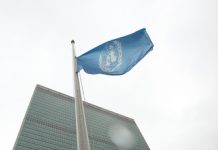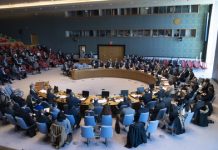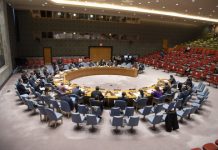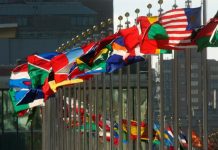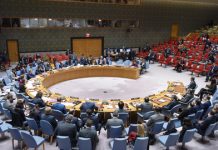Ukraine records highest toll from cluster munitions for third year running
The Ukrainian conflict has recorded the highest death and injury toll from cluster munitions for the third year running, UN-backed researchers said on Monday.
According to the latest Cluster Munitions Monitor, more than 1,200 people have been confirmed killed or maimed since Russia’s full-scale invasion in February 2022.
The true figure is likely much higher, said Loren Persi, team lead for the Cluster Munition Monitor report, which is supported by the UN disarmament research agency, UNIDIR.
Here’s Mr. Persi now:
“What is very clear is that civilians continue to bear the brunt of this indiscriminate weapon. Consistently, the number of civilian casualties has been over 90 per cent in all the years that we have measured that. And consistently, children have suffered from the impact of cluster emission remnants, which they often find interesting, think are toys or come across in play or on their way to school or when walking in fields and similar sort of day-to-day activities that children go about and do.”
The civil society publication on cluster munitions notes Israeli allegations that cluster munitions were used in a ballistic missile attack by Iran in June 2025, and the reported but unverified use of the weapons in Gaza and southern Lebanon.
In Gaza City, airstrikes are intensifying, warns UNRWA chief
To Gaza, where airstrikes are intensifying in Gaza City and the north of the war-torn enclave, the head of the UN agency for Palestinians, UNRWA, said on Monday.
In the past four days, 10 UNRWA buildings have been hit in Gaza City, said the agency’s Commissioner-General, Philippe Lazzarini.
This includes seven schools and two clinics used as shelters for thousands of displaced people.
Mr. Lazzarini said that the agency has had to stop healthcare in the only place available north of Wadi Gaza.
Water and sanitation services provided by UNRWA are now at half-capacity, the veteran humanitarian noted, but he insisted that teams continue to provide critical services in other parts of northern Gaza and the rest of the Gaza Strip.
Tedros urges countries to overcome last hurdles in way of inking Pandemic Treaty
The head of the UN health agency, Tedros Adhanom Ghebreyesus, has urged all countries to overcome the final obstacles standing in the way of a functioning global pandemic treaty.
States adopted a Pandemic Agreement earlier this year, but they have yet to agree on a mechanism allowing viruses that could cause another global health crisis to be shared for research purposes.
This would allow countermeasures to be developed more quickly so that poorer nations can treat their populations who suffered from a lack of access to COVID-19 vaccines and treatment during the pandemic.
Member States have one week to find common ground on the pathogen access platform; final negotiations are scheduled to start before the end of the year and the goal is for the World Health Organization’s executive body to adopt the deal.
Once that is done, countries will be able to sign and ratify the Pandemic Agreement.
“It is in every country’s interest that this process is not delayed any further,” Tedros said, adding that “the next pandemic or major global health emergency is not a question of if, but when”.
Daniel Johnson, UN News
Source of original article: United Nations (news.un.org). Photo credit: UN. The content of this article does not necessarily reflect the views or opinion of Global Diaspora News (www.globaldiasporanews.com).
To submit your press release: (https://www.globaldiasporanews.com/pr).
To advertise on Global Diaspora News: (www.globaldiasporanews.com/ads).
Sign up to Global Diaspora News newsletter (https://www.globaldiasporanews.com/newsletter/) to start receiving updates and opportunities directly in your email inbox for free.



